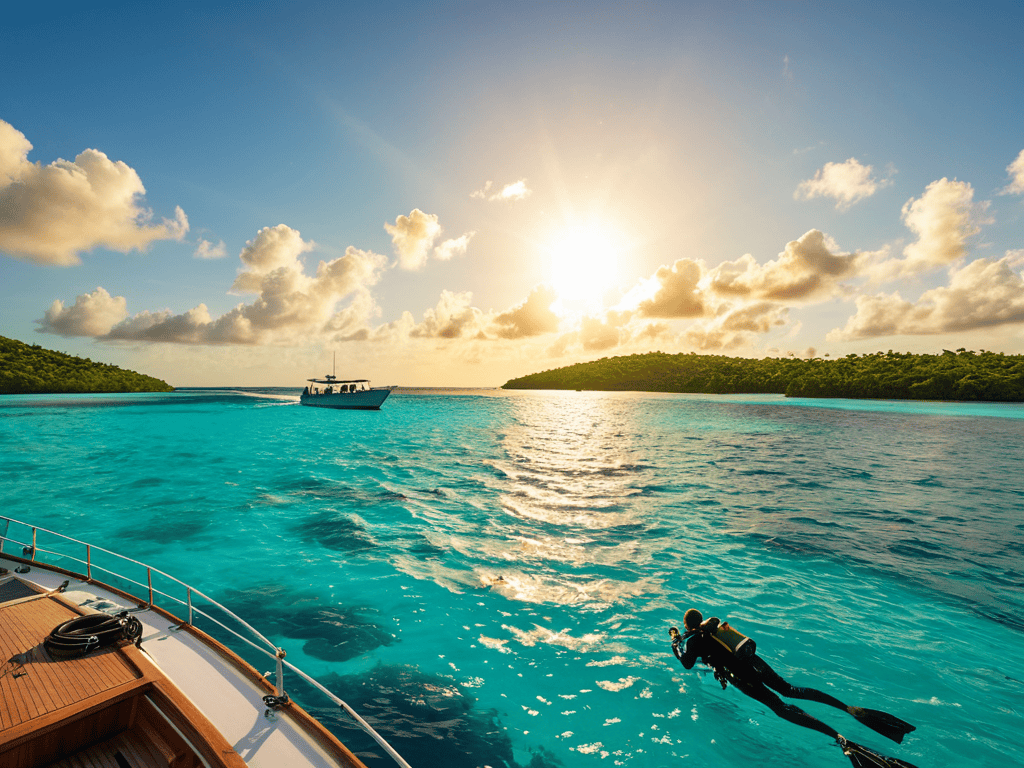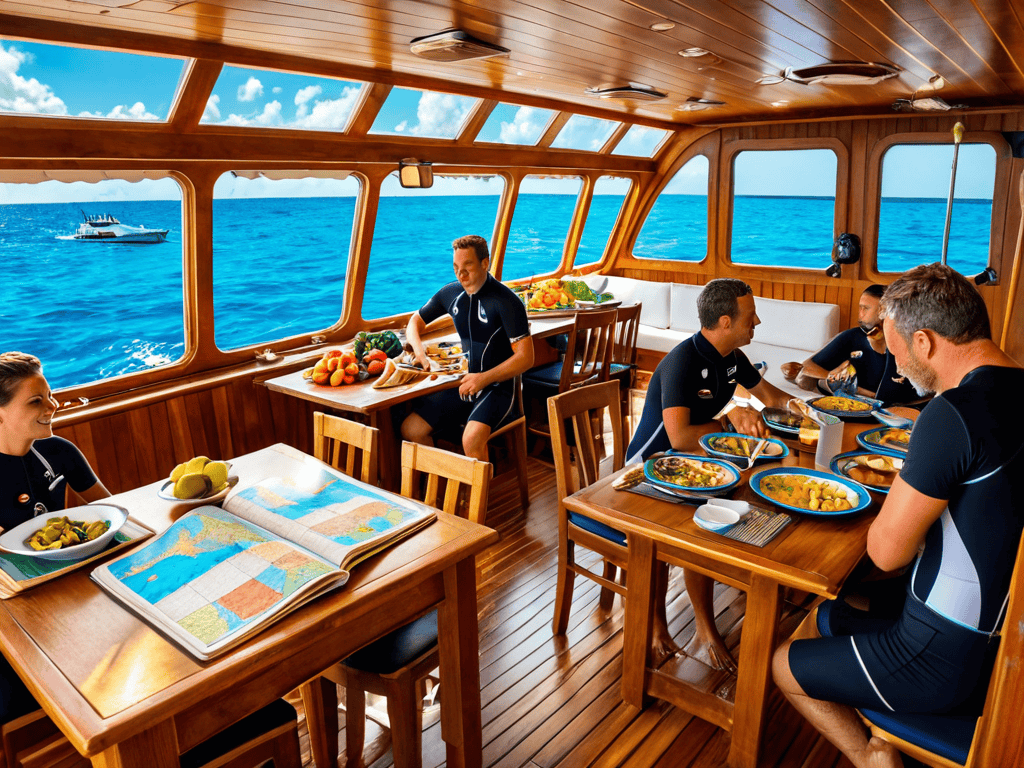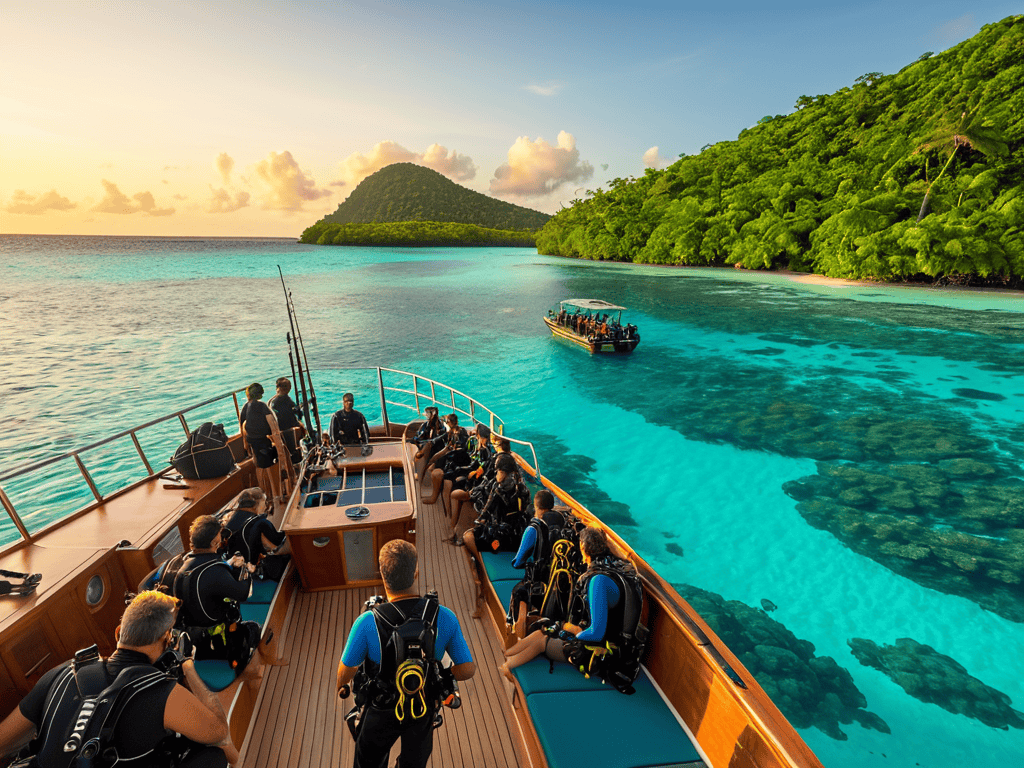I still remember the day I embarked on my first liveaboard scuba diving trip like it was yesterday. The thrill of exploring the unknown, the rush of discovering vibrant marine life, and the sense of camaraderie with fellow divers are just a few things that made it an unforgettable experience. If you’re considering taking the plunge and booking a beginner’s guide to a liveaboard scuba diving trip, you’re probably wondering what to expect and how to make the most of it.
This article is designed to provide you with honest and practical advice on how to navigate the world of liveaboard scuba diving as a beginner. You’ll learn how to choose the right operator, prepare for your trip, and make the most of your time underwater. From packing essentials to dive planning, we’ll cover it all in a straightforward and easy-to-follow manner, so you can focus on enjoying your liveaboard scuba diving adventure.
Table of Contents
- Guide Overview: What You'll Need
- Step-by-Step Instructions
- A Beginners Guide to Liveaboard Scuba
- Diving into the Essentials: 5 Key Tips for a Beginner's Liveaboard Scuba Adventure
- Key Takeaways for an Unforgettable Liveaboard Scuba Adventure
- Diving into the Unknown
- Embracing the Dive: A Beginner's Journey to Liveaboard Scuba
- Frequently Asked Questions
Guide Overview: What You'll Need

Total Time: 5 days to 1 week
Estimated Cost: $1,500 – $3,000
Difficulty Level: Intermediate / Hard
Tools Required
- Scuba diving gear (including mask, snorkel, fins, and regulator)
- Dive computer (for monitoring depth and time)
- Underwater light (for night dives)
- First aid kit (including supplies for treating marine life injuries)
- Navigation tools (including compass, charts, and GPS device)
Supplies & Materials
- Liveaboard boat (with kitchen, bathroom, and sleeping quarters)
- Food and water (for the duration of the trip, approximately 1 gallon of water per person per day)
- Fuel (for the boat, approximately 10 gallons per day)
- Dive flag (for indicating diver presence)
- Emergency oxygen kit (in case of diving emergencies)
- Marine life guidebook (for identifying species encountered during dives)
Step-by-Step Instructions
- 1. First, research and choose a reputable liveaboard operator that fits your budget and diving style. Look for reviews, ask for referrals, and check their safety record to ensure you’re in good hands. This will be the foundation of your entire trip, so take your time and don’t rush into a decision.
- 2. Next, check the itinerary and diving schedule to make sure it aligns with your expectations and skill level. Liveaboard trips can be quite packed, with multiple dives per day, so it’s essential to know what you’re getting yourself into. Consider the types of dives, the depth, and the marine life you’ll encounter.
- 3. Then, get the necessary gear and equipment for your trip. While many liveaboards offer rental gear, it’s a good idea to have your own mask, snorkel, and fins to ensure a comfortable fit. Don’t forget to pack essentials like a wetsuit, dive computer, and underwater light if needed.
- 4. Before you leave, review and understand the safety procedures in place on the liveaboard. This includes knowing what to do in case of an emergency, how to use the safety equipment, and being familiar with the vessel’s layout. It’s also a good idea to purchase dive insurance that covers liveaboard trips.
- 5. Once you’re on board, get familiar with the vessel and its crew. Take some time to explore the boat, meet your fellow divers, and get to know the instructors and guides. They’ll be your lifeline during the trip, so build a rapport with them and don’t hesitate to ask questions.
- 6. As you prepare for your first dive, pay attention to the briefings and instructions provided by the crew. They’ll give you valuable insights into the dive site, the conditions, and any potential hazards. Listen carefully and take notes if needed, as this information will help you stay safe and make the most of your dive.
- 7. During the trip, keep a dive log and record your experiences. This will help you track your progress, note any challenges or successes, and provide a valuable reference for future dives. Don’t forget to take plenty of photos and videos to capture the memories of your epic liveaboard adventure.
A Beginners Guide to Liveaboard Scuba

As you prepare for your liveaboard scuba adventure, it’s essential to consider scuba diving certification requirements. Ensure you have the necessary qualifications to participate in the dives, and don’t hesitate to ask your operator about any specific requirements. Additionally, familiarize yourself with the liveaboard boat amenities to make the most of your trip. From comfortable cabins to delicious meals, these amenities can greatly enhance your overall experience.
As you’re preparing for your liveaboard scuba diving adventure, it’s essential to stay connected with like-minded individuals who share your passion for the sport. Joining online communities or forums can be a great way to learn from others, get tips, and even find a dive buddy. For instance, you can explore websites that offer a platform for people to share their experiences and find others with similar interests, such as sexkontakte, which can be a useful resource for those looking to connect with others who enjoy water sports and other activities. By expanding your network, you’ll not only gain valuable insights but also enhance your overall diving experience.
When it comes to scuba diving safety protocols, it’s crucial to understand the procedures in place to ensure your well-being. Your operator should provide a thorough briefing on emergency procedures, and you should always dive with a buddy. Moreover, be mindful of marine life conservation efforts and take steps to minimize your impact on the environment. This includes respecting marine life, not touching coral reefs, and avoiding single-use plastics.
To make the most of your liveaboard scuba diving experience, it’s also important to consider budgeting for a liveaboard diving trip. Factor in the cost of scuba diving gear maintenance, as well as any additional expenses such as equipment rentals or courses. By being prepared and planning ahead, you can focus on enjoying your time underwater and creating unforgettable memories.
Liveaboard Boat Amenities Revealed
When you’re not diving, you’ll be living on the boat, so it’s essential to know what to expect from the amenities. Most liveaboard boats offer comfortable cabins, shared or private, with en-suite bathrooms and air conditioning. You’ll also find a dining area where meals are served, and a lounge for relaxation. Some boats even have a sun deck or a small pool, perfect for soaking up the sun between dives.
The galley, or kitchen, is usually equipped to provide delicious meals, and some boats may even offer snack bars or refreshments throughout the day. Additionally, you might find entertainment options like TVs, libraries, or games to keep you occupied during downtime. Overall, liveaboard boats cater to divers’ needs, providing a comfortable and convenient base for your underwater adventures.
Scuba Diving Certification Requirements
To embark on a liveaboard scuba diving trip, you’ll typically need to hold a scuba diving certification from a recognized organization, such as PADI or SSI. This certification ensures you’ve received proper training and have the necessary skills to dive safely. Most liveaboard operators require a minimum of an Open Water certification, but some may demand more advanced certifications, like Advanced Open Water or specialty certifications, depending on the dive sites and conditions.
Your certification should be up to date, and you may need to provide proof of your certification and diving experience when booking your trip. Some liveaboard operators also offer certification courses on board, which can be a great way to advance your skills while on your trip. Be sure to check with your operator for specific certification requirements and any additional training opportunities they may offer.
Diving into the Essentials: 5 Key Tips for a Beginner's Liveaboard Scuba Adventure
- Research and Choose the Right Liveaboard Operator for Your Skill Level and Interests
- Pack Smart: Essential Gear and Items to Bring on Your Liveaboard Scuba Diving Trip
- Understand Your Scuba Diving Certification Requirements and Limitations
- Respect the Marine Environment: Tips for Responsible and Sustainable Scuba Diving Practices
- Prepare for the Unexpected: Safety Procedures and Emergency Protocols on a Liveaboard Scuba Diving Trip
Key Takeaways for an Unforgettable Liveaboard Scuba Adventure
Dive into the world of liveaboard scuba diving with the right mindset and preparation, ensuring a safe and enjoyable experience
Choose a reputable operator that fits your needs, considering factors such as scuba diving certification requirements and liveaboard boat amenities
Embrace the journey, be open to new experiences, and take in the breathtaking beauty of the underwater world, creating memories that will last a lifetime
Diving into the Unknown
The ocean has a way of awakening our sense of wonder, and a liveaboard scuba diving trip is the ultimate key to unlocking its secrets – all you need to do is take the first breath.
Samantha 'Sam' Thompson
Embracing the Dive: A Beginner's Journey to Liveaboard Scuba

As you prepare to embark on your liveaboard scuba diving adventure, remember to stay focused on the essentials: getting the right scuba diving certification, choosing a reputable operator, and being mindful of the amazing boat amenities that will make your trip unforgettable. From the initial planning stages to the final moments of your journey, it’s crucial to immerse yourself in the experience and soak up every moment of this unique adventure. By following the steps outlined in this guide, you’ll be well on your way to creating lifelong memories and possibly even discovering a new passion.
As you take the plunge and book your liveaboard scuba diving trip, keep in mind that this journey is not just about the destination, but about the transformation that occurs along the way. The friendships you’ll forge, the challenges you’ll overcome, and the breathtaking underwater landscapes you’ll encounter will all combine to create an experience that will leave you feeling refreshed, renewed, and ready to take on whatever life has in store for you.
Frequently Asked Questions
What kind of physical condition do I need to be in to participate in a liveaboard scuba diving trip?
To join a liveaboard scuba diving trip, you should be in good overall health and reasonably fit. You don’t need to be an athlete, but being able to swim and having basic cardiovascular endurance is essential. Some trips may also require a medical certificate, especially if you have any pre-existing conditions.
How do I choose the right liveaboard boat and operator for my skill level and budget?
When selecting a liveaboard boat and operator, consider your skill level and budget. Look for operators that cater to your certification level and offer amenities within your price range. Research online, read reviews, and ask fellow divers for recommendations to find the perfect fit for your adventure.
What kind of safety measures can I expect to be in place on a liveaboard scuba diving trip?
Safety first – it’s a top priority on liveaboard trips. You can expect a thorough briefing, guided dives, and a well-maintained boat with emergency equipment on hand. Many operators also have first aid kits, oxygen supply, and a emergency response plan in place, giving you peace of mind to focus on the dive.



